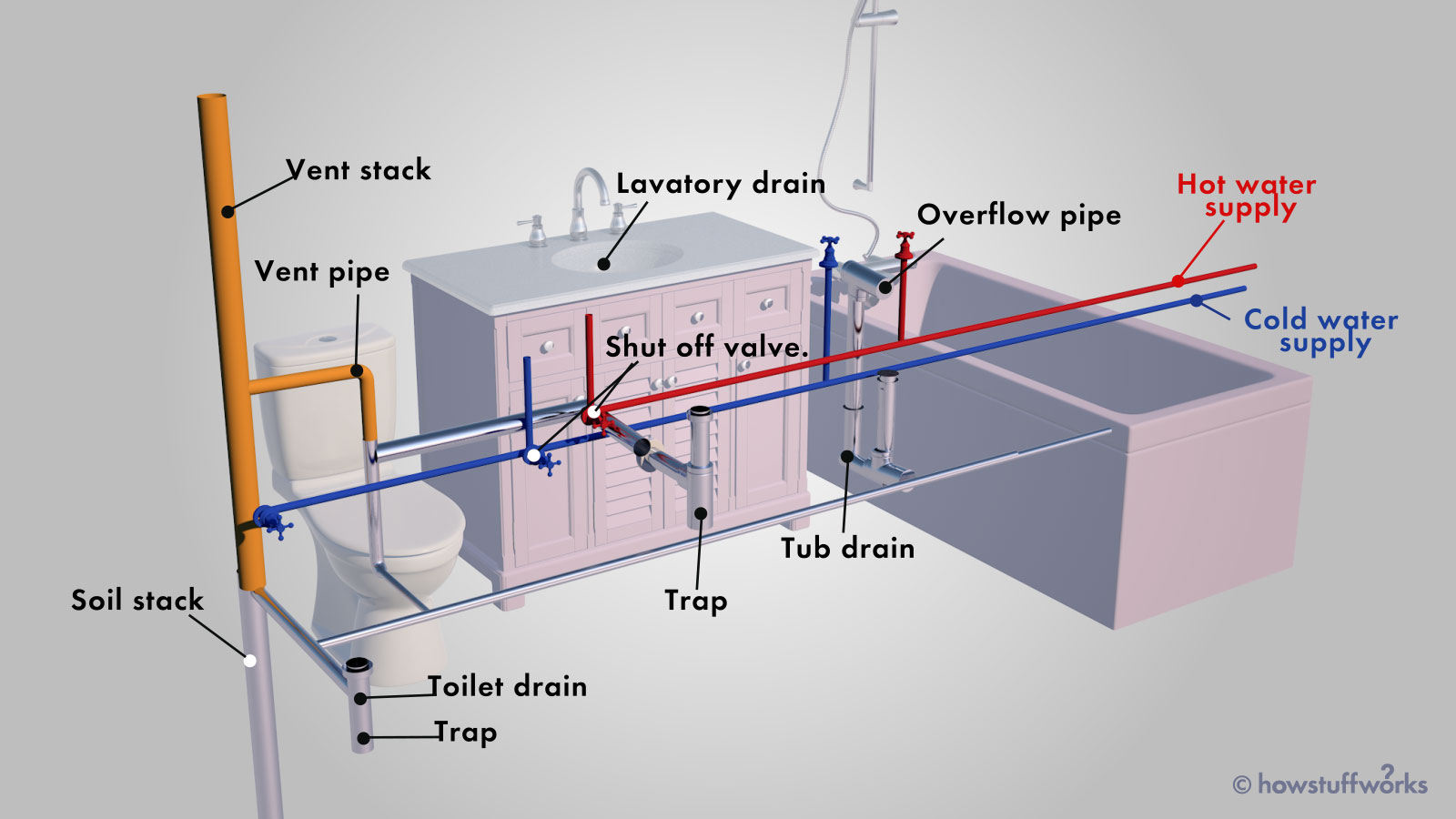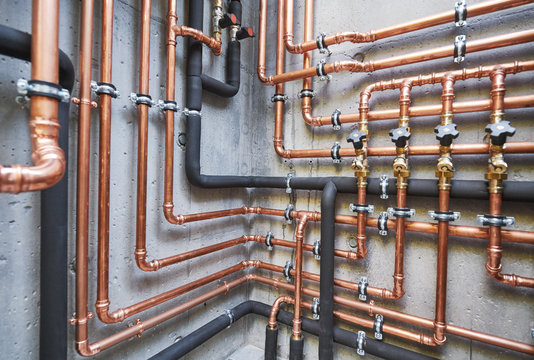What You Need to Know About Your House's Plumbing System Anatomy
What You Need to Know About Your House's Plumbing System Anatomy
Blog Article
What are your beliefs on Plumbing Installation 101: All You Need to Know?

Understanding how your home's plumbing system functions is important for every homeowner. From providing clean water for drinking, food preparation, and showering to securely getting rid of wastewater, a well-maintained plumbing system is vital for your household's wellness and convenience. In this detailed guide, we'll check out the detailed network that composes your home's pipes and deal suggestions on maintenance, upgrades, and managing typical issues.
Intro
Your home's plumbing system is greater than simply a network of pipes; it's a complicated system that ensures you have access to tidy water and effective wastewater elimination. Recognizing its components and exactly how they work together can help you avoid expensive repair services and make sure every little thing runs efficiently.
Fundamental Components of a Plumbing System
Pipes and Tubing
At the heart of your plumbing system are the pipes and tubing that carry water throughout your home. These can be made of various materials such as copper, PVC, or PEX, each with its advantages in regards to durability and cost-effectiveness.
Components: Sinks, Toilets, Showers, and so on.
Fixtures like sinks, bathrooms, showers, and bathtubs are where water is made use of in your house. Understanding just how these components connect to the pipes system assists in diagnosing issues and planning upgrades.
Valves and Shut-off Factors
Valves control the circulation of water in your plumbing system. Shut-off shutoffs are crucial throughout emergencies or when you require to make repairs, permitting you to separate parts of the system without disrupting water flow to the whole house.
Water System
Key Water Line
The major water line links your home to the local supply of water or a private well. It's where water enters your home and is distributed to various components.
Water Meter and Pressure Regulator
The water meter measures your water usage, while a stress regulatory authority makes sure that water streams at a secure stress throughout your home's pipes system, protecting against damages to pipelines and fixtures.
Cold Water vs. Warm water Lines
Understanding the difference between cold water lines, which provide water straight from the main, and hot water lines, which lug heated water from the hot water heater, aids in fixing and planning for upgrades.
Drainage System
Drain Water Lines and Traps
Drain pipes bring wastewater away from sinks, showers, and commodes to the sewer or septic tank. Traps avoid drain gases from entering your home and likewise trap particles that could cause blockages.
Ventilation Pipes
Air flow pipelines allow air into the water drainage system, avoiding suction that could reduce drain and trigger catches to empty. Correct ventilation is crucial for maintaining the stability of your pipes system.
Significance of Correct Drain
Ensuring appropriate water drainage avoids back-ups and water damage. Regularly cleansing drains and keeping traps can stop costly repair services and extend the life of your pipes system.
Water Heating System
Kinds Of Hot Water Heater
Water heaters can be tankless or conventional tank-style. Tankless heating systems heat water on demand, while containers store warmed water for immediate use.
Exactly How Water Heaters Attach to the Plumbing System
Understanding how hot water heater connect to both the cold water supply and warm water circulation lines assists in identifying problems like not enough warm water or leaks.
Maintenance Tips for Water Heaters
Routinely purging your water heater to get rid of debris, checking the temperature settings, and inspecting for leakages can expand its life-span and improve energy performance.
Usual Plumbing Concerns
Leakages and Their Causes
Leakages can occur because of maturing pipelines, loose fittings, or high water pressure. Resolving leaks without delay stops water damage and mold and mildew growth.
Clogs and Obstructions
Obstructions in drains pipes and commodes are typically caused by purging non-flushable things or an accumulation of grease and hair. Utilizing drain screens and bearing in mind what decreases your drains can prevent obstructions.
Indicators of Pipes Troubles to Look For
Low water pressure, slow drains pipes, foul odors, or unusually high water costs are signs of possible pipes problems that should be dealt with immediately.
Pipes Maintenance Tips
Routine Inspections and Checks
Schedule annual pipes examinations to capture issues early. Search for signs of leakages, deterioration, or mineral build-up in taps and showerheads.
Do It Yourself Upkeep Tasks
Basic tasks like cleansing tap aerators, checking for toilet leakages making use of dye tablets, or insulating subjected pipes in chilly climates can avoid major pipes concerns.
When to Call a Specialist Plumbing Technician
Know when a pipes concern calls for specialist know-how. Trying complicated repair services without appropriate understanding can result in even more damages and greater fixing expenses.
Updating Your Pipes System
Reasons for Upgrading
Upgrading to water-efficient components or changing old pipelines can boost water top quality, lower water costs, and boost the worth of your home.
Modern Plumbing Technologies and Their Benefits
Check out innovations like wise leakage detectors, water-saving commodes, and energy-efficient hot water heater that can save money and decrease environmental impact.
Cost Considerations and ROI
Compute the ahead of time prices versus lasting financial savings when considering plumbing upgrades. Numerous upgrades pay for themselves through reduced energy costs and less fixings.
Environmental Impact and Conservation
Water-Saving Fixtures and Appliances
Installing low-flow taps, showerheads, and commodes can significantly decrease water usage without sacrificing performance.
Tips for Lowering Water Use
Simple habits like dealing with leakages quickly, taking shorter showers, and running full loads of laundry and dishes can conserve water and reduced your energy expenses.
Eco-Friendly Pipes Options
Take into consideration lasting plumbing products like bamboo for floor covering, which is durable and green, or recycled glass for kitchen counters.
Emergency situation Readiness
Actions to Take During a Pipes Emergency
Know where your shut-off valves are located and exactly how to shut off the water in case of a ruptured pipe or significant leakage.
Relevance of Having Emergency Calls Useful
Maintain call details for neighborhood plumbing technicians or emergency solutions conveniently available for quick action during a pipes situation.
DIY Emergency Situation Fixes (When Suitable).
Short-term solutions like making use of air duct tape to patch a leaking pipeline or putting a bucket under a trickling tap can minimize damages till an expert plumber gets here.
Conclusion.
Comprehending the anatomy of your home's plumbing system encourages you to keep it efficiently, saving time and money on repairs. By adhering to routine maintenance routines and remaining notified regarding modern plumbing technologies, you can guarantee your pipes system operates efficiently for several years ahead.
HOW YOUR PLUMBING SYSTEM WORKS
Which Pipes Do What?
Blue lines = fresh water supply entering the building
Red lines = hot water supply entering the building
Grey lines = pipes carrying waste away from the building and venting pipes carrying gases away from the building (through the roof)
YOUR MAIN PLUMBING SYSTEMS
There are two main plumbing systems that support your home s basic plumbing needs one that brings clean water into your home, and one that sends dirty water away from your home. Connected to the toilet, bath, shower, and other faucets in your home, these two systems keep your water flowing in the right directions.
ACCESSING FRESH WATER
Fresh and clean water is brought into your home through the main water supply line . Filtered through one pipe, this water is pressured to flow into the various fixtures in your home at any given time.
This water can be sourced from a well located on your property, a pond or river (mostly cottages), or, as in most cases, from the city s municipal water treatment centre. However, it is important to note that water that is untreated, such as the water siphoned from ponds or rivers, may not be safe to drink. Personal water supplies always need to be treated for hardness and contaminants before consumed.
MUNICIPAL WATER SUPPLIES
Improve taste and odour
Remove sediment
Eliminate hardness
Reduce chlorine
COLD WATER SUPPLY VS. HOT WATER SUPPLY
Cold water flows into your home or building through the service line, which then distributes hot or cold water to your fixtures. This line is most commonly run through a central column that runs floor to floor. Hot water runs in short and straight pipes as the longer the pipeline, the more heat that will be lost in the transfer. Having shorter pipes also allows residents to access hot water more quickly.
WASTE WATER SYSTEM
Your wastewater system is divided into two parts pipes that send wastewater away from your home and venting pipes that send sewer gas away from your home. Sewage water travels through pipes that flush the water and waste towards local sewers that are operated and managed by your city or town. Most sewer systems rely on gravity to move the wastewater to where it needs to go.
The further away from your toilet or sink, the larger wastewater pipes become. This allows for waste to be disposed of from various parts of your home or business at once without pipe blockages. The angle and flow of these pipes are also essential for keeping your waste pipes clear of build up.
https://harrisplumbing.ca/how-your-home-plumbing-system-works/

HOW YOUR PLUMBING SYSTEM WORKS
Which Pipes Do What?
YOUR MAIN PLUMBING SYSTEMS
There are two main plumbing systems that support your home s basic plumbing needs one that brings clean water into your home, and one that sends dirty water away from your home. Connected to the toilet, bath, shower, and other faucets in your home, these two systems keep your water flowing in the right directions.
ACCESSING FRESH WATER
Fresh and clean water is brought into your home through the main water supply line . Filtered through one pipe, this water is pressured to flow into the various fixtures in your home at any given time.
This water can be sourced from a well located on your property, a pond or river (mostly cottages), or, as in most cases, from the city s municipal water treatment centre. However, it is important to note that water that is untreated, such as the water siphoned from ponds or rivers, may not be safe to drink. Personal water supplies always need to be treated for hardness and contaminants before consumed.
MUNICIPAL WATER SUPPLIES
COLD WATER SUPPLY VS. HOT WATER SUPPLY
Cold water flows into your home or building through the service line, which then distributes hot or cold water to your fixtures. This line is most commonly run through a central column that runs floor to floor. Hot water runs in short and straight pipes as the longer the pipeline, the more heat that will be lost in the transfer. Having shorter pipes also allows residents to access hot water more quickly.
WASTE WATER SYSTEM
Your wastewater system is divided into two parts pipes that send wastewater away from your home and venting pipes that send sewer gas away from your home. Sewage water travels through pipes that flush the water and waste towards local sewers that are operated and managed by your city or town. Most sewer systems rely on gravity to move the wastewater to where it needs to go.
The further away from your toilet or sink, the larger wastewater pipes become. This allows for waste to be disposed of from various parts of your home or business at once without pipe blockages. The angle and flow of these pipes are also essential for keeping your waste pipes clear of build up.
https://harrisplumbing.ca/how-your-home-plumbing-system-works/
As an avid person who reads on Anatomy of a House: Understanding the Components, I think sharing that piece of content was worthwhile. Remember to take the time to share this blog if you liked it. Kudos for your time. Come back soon.
Check This Out Report this page